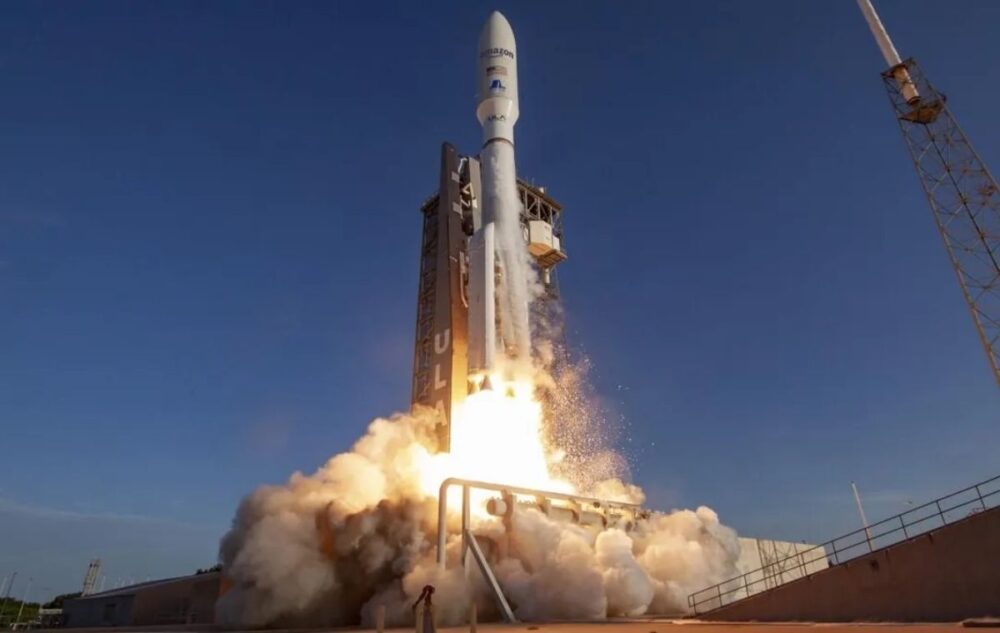As part of Amazon’s Project Kuiper, three new heavy-lift rockets will launch thousands of satellites into low-Earth orbit over the next five years.
A constellation of 3,236 satellites will be used in the project to deliver broadband access.
Starlink, a competitor, is believed to have more than 2,300 satellites already in orbit.
Arianespace, Blue Origin (established by Amazon owner Jeff Bezos), and United Launch Alliance will build the rockets.
According to Amazon, Project Kuiper intends to provide high-speed, low-latency broadband to clients such as households, businesses, government agencies, disaster relief operations, mobile operators, and other organizations “operating in regions where reliable internet connectivity is unavailable.”
Users will connect to the internet via a terminal that communicates with the satellites, similar to Elon Musk’s Starlink. Amazon claims that its experience in shipping and manufacturing devices such as the Echo and Kindle will be beneficial in producing and distributing these.
“Project Kuiper will offer fast, cheap broadband to tens of millions of users in unserved and underserved places worldwide,” said Dave Limp, senior vice president of Amazon Devices & Services, in a statement announcing the acquisition.
New rockets
Amazon intends to launch 83 rockets over the next five years, calling it the “biggest commercial acquisition of launch vehicles in history.”
Later this year, the company planned two “prototype” missions, but they will use an ABL Space Systems rocket rather than the three that would launch the majority of the satellites.
The three new rockets utilized for Project Kuiper launches, unlike Elon Musk’s Falcon 9 rockets, are still in development.
Following the invasion of Ukraine, another satellite internet provider, OneWeb, which is partly controlled by the British government, recently elected to employ SpaceX Falcon 9 rockets after losing access to the Russian-built Soyuz rockets it had been using.
Mr. Musk hopes to send up to 30,000 Starlink satellites into space.
The value of this form of low-Earth orbit satellite internet has already been proved in Ukraine, where the US Agency for International Development announced that it had helped send 5,000 Starlink terminals to the country’s government in collaboration with SpaceX.
However, as low-Earth orbit gets increasingly crowded, astronomers have complained that the light reflected from these satellites as they pass overhead interferes with their view of the night sky.
“The satellites are literally killing our gorgeous night sky,” astronomer Mary McIntyre wrote on Twitter.
Overnight on 2nd3rd April 2022 our SW facing #RaspberryPi #meteorcamera UK0006 based in North Oxfordshire had one of the worst nights we’ve ever seen for #satellitetrails. Dotted lines = aircraft, curved lines = #startrails + there are about 25 meteors. Just horrendous 🙁 pic.twitter.com/ZLZNK4xgq2
— Mary McIntyre FRAS (she/her) (@Spicey_Spiney) April 4, 2022
There are also concerns that having so many satellites in orbit increases the possibility of collisions and adds to the problem of space debris.








































